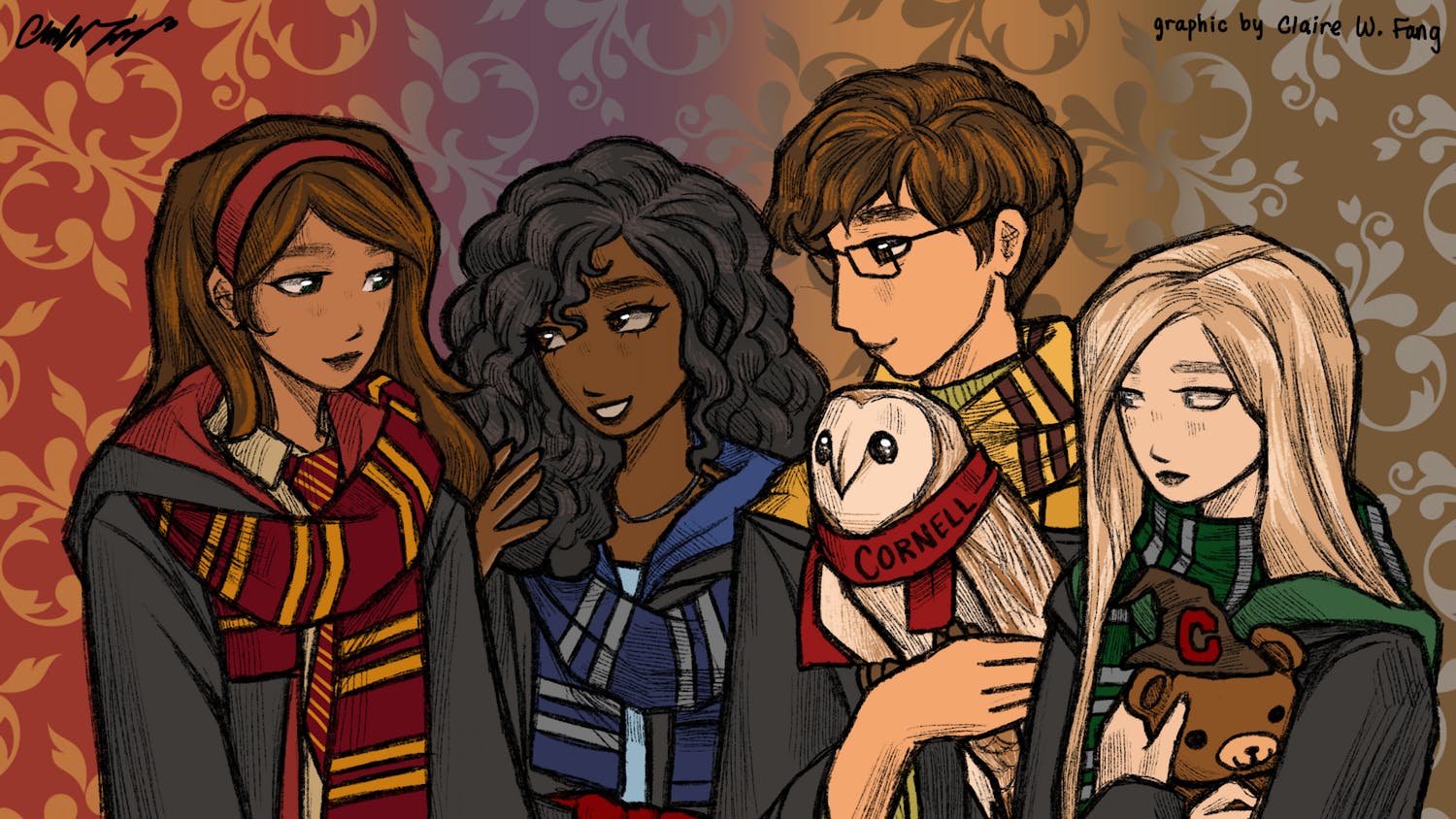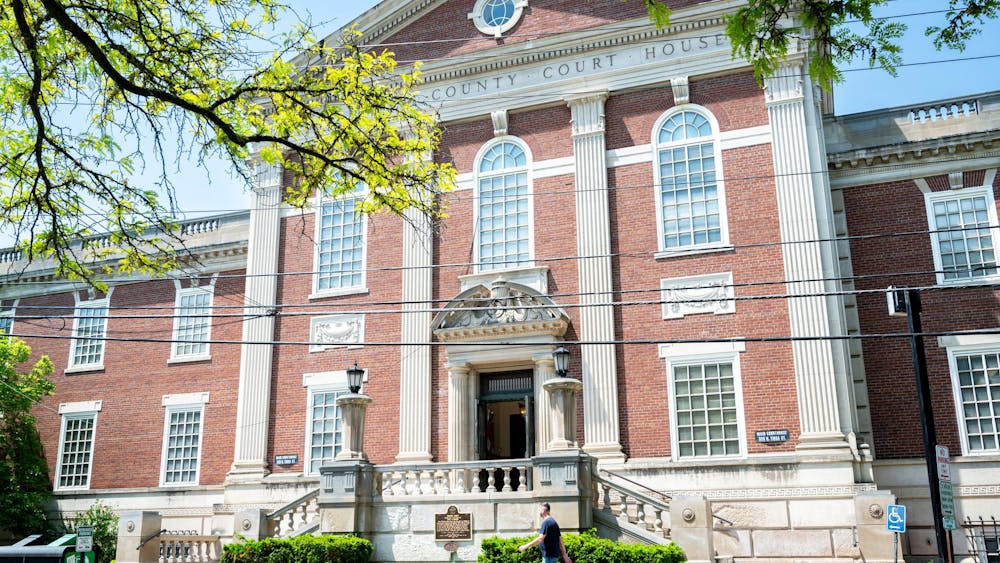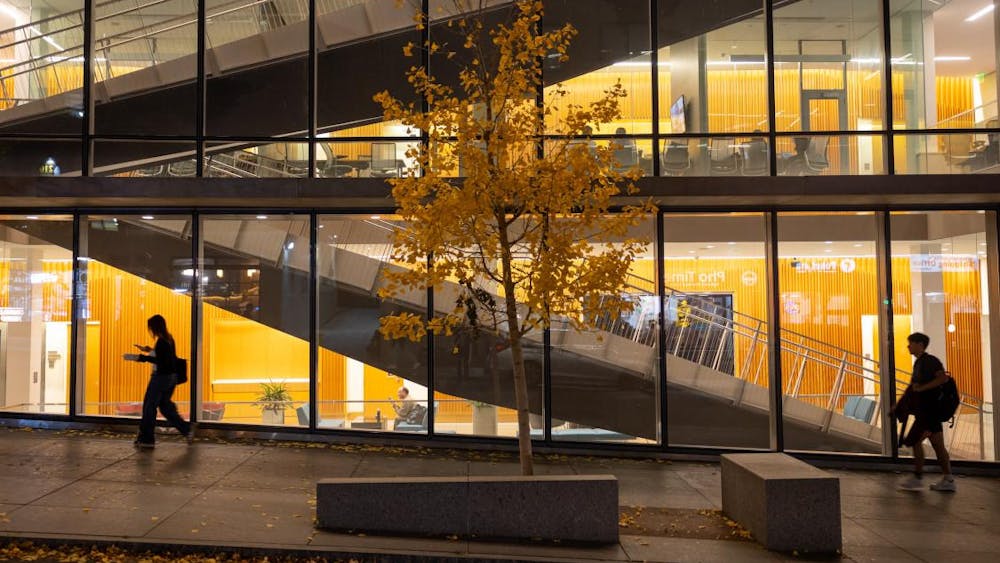Today, Hunter Hughes is a senior faceoff specialist for No. 7 men’s lacrosse — but not too long ago, he was a sniper in the United States Marine Corps.
The 29-year-old, who walked onto the men’s lacrosse team his junior year, faced a long journey before he found himself taking face-offs for the Red. Growing up in Thousand Oaks, Calif., Hughes had considered joining the military throughout high school, but never saw himself actually following through.
“I was always interested in it, but never saw myself actually doing it,” he said.
But after speaking with a Marine recruiter, he took the dive and enlisted as a Marine Recon candidate.
In a stroke of bad luck, just before shipping for bootcamp, Hughes broke his foot and was forced to give up his Recon contract and instead shipped to bootcamp as general infantry. A month and a half after completing training, Hughes and his unit deployed to Iraq. It was during this 2009 deployment that Hughes found his calling as a scout sniper.
“I was sitting in this post absolutely melting in this metal box,” Hughes said. “And I look out the back of my post and sitting on a little makeshift helipad were four dudes. They all have long hair, Oakley shades on, just silkies and boots on, either tanning or clean pressing a 225 lbs dumbbell. They’re all yoked.”
“I’m like, ‘who are those guys?’ 19-year-old me is like, ‘how do I do that instead of doing this?’ I came to find out that it was the Marine sniper team,” he continued.
Hughes was somewhat familiar with Marine scout snipers before his time in the service.
“I had read the books and stuff in high school, I knew [about famed Marine Corps sniper] Carlos Hathcock and those guys,” he said.
After returning from Iraq, Hughes jumped at the opportunity to try out as a scout sniper candidate when his battalion began recruiting for them.
“They hold an indoc[trination], for us it was like a two-week ‘hell week’ process,” he said.
“Hell Week” refers to the period that is used by highly demanding combat roles to weed out weak candidates. Hughes explained that during the two weeks of training, the candidates were pushed to their mental and physical limits, all while running on very little sleep.
60 candidates started the indoctrination process, with 30 candidates proceeding to the next “field week” phase. That next stage included more in-depth technical training as a sniper with even less sleep, ultimately ending with six selectees, including Hughes, out of the group of 30.
Shortly after completing Scout Sniper indoctrination, Hughes deployed again, this time to Afghanistan.
“I went to Afghanistan as a Pig, as part of a sniper team,” Hughes said. ‘Pig’ refers to a newly selected scout sniper candidate that has yet to complete Scout Sniper School, undergoing training by senior members called ‘Hogs.’
Hughes was deployed to Marjah in Helmand Province, Afghanistan — the same region that saw Operation Moshtarak. Commonly called the Battle of Marjah, the 2010 operation saw heavy combat, ending with 61 International Security Assistance Force casualties. The Taliban suffered approximately 120 casualties within the first five days of the operation.
After returning from Afghanistan, Hughes attended Scout Sniper School, officially becoming a Hog. As a Hog, Hughes deployed two more times, once more to Afghanistan and another as a detachment with Marine Recon.
When the end of Hughes’ enlistment came, he was ready to move on from the military, having completed four deployments in six years of service.
“I got out because at a certain point, particularly in the Marine Corps, you pick up Staff NCO [non-commissioned officer] and you’re looking at riding a desk job” Hughes explained. “I loved my job, but I didn’t want to do a desk job.”
Hughes ultimately separated from the military to go back to school.
“I had done so poorly in high school,” he said. “It was a wrong I wanted to right. I knew I could do it, I just hadn’t focused.”
Hughes, who had then been out of school for six years, returned to square one, enrolling at Moorpark College near his native Thousand Oaks.
“I was at community college for three years — I spent a year of it just doing high school classes, just trying to catch up again,” he said. “It ended up being really good. I ended up really sinking my teeth into it.”
Hughes noted that his military experience was his greatest asset when returning to school.
“You come back after the military and you have a different focus,” Hughes said. “[You have] a different maturity, a bit of a drive that you didn’t have in high school.”
While he excelled in school, Hughes started to get antsy from the slower pace of civilian life.
“I’ve always needed something competitive,” he said. Eventually, he found that lacrosse was able to fill the void left from the military.
“I picked up lacrosse again because of a friend I played in high school with,” he said. “[He] convinced me to go out and play lacrosse again at this pick-up game in L.A.”
Falling “in love with it again,” Hughes instantly reconnected with the sport. “It gave me a reason to work out, I enjoyed it, it was competitive, it gave me something to work on every day,” he said.
Hughes eventually started to think about transferring to a four-year college, citing a friend at Columbia as motivation for looking into selective universities. When applying to transfer, Cornell was at the top of his list.
“I was applying to schools that didn’t require an SAT or ACT … I think a lot of us [veterans] did,” Hughes said, referring to Cornell’s policy of not requiring standardized test scores from transfer applicants.
While many schools are shifting away from standardized test scores, it remains one of the biggest barriers for veterans interested in not only selective schools but also college in general.
“It’s a test that is testing me on high school knowledge … I did well, but there were so many little things that I was missing,” he said. “It’s such an arbitrary barrier.”
Hughes still remembers the moment he found out he was accepted to Cornell.
“I’ve never been so excited in my life” he said, smiling. “It was that redemption feeling.”
Hughes had been coaching the Westlake High School lacrosse team in Westlake Village, California, when some of the players caught wind of his acceptance to Cornell.
“One kid went and did a bunch of homework on it and found out I still had [NCAA] eligibility,” Hughes said.
The NCAA’s Five Year Rule states that a student athlete’s eligibility clock starts one year after high school graduation. The rule, however, allows an exception for students that choose to serve in the military, freezing the eligibility clock during service. This was Hughes’ shot at a collegiate lacrosse career.
With the possibility there for Hughes, the high school players he coached would frequently try to convince him to try out for Cornell’s team.
“They started bugging me,” he said. “They’re like, you should try out for Cornell.”
He decided to make his players a deal.
“I told them ‘Look, I will try out if you guys give me everything you got every single day,’” he said. “But you have to give me everything.”
The team had struggled the year prior, finishing under .500.
“We ended that season 13-6,” he said with a smile. “It’s like, all right, well you upheld your end of the bargain, and they did, they showed up every single day and worked hard.”
Hughes then began preparing for Cornell tryouts. He spent the summer training and conditioning up to three times a day. By the time he arrived on campus, he had been contacting the coaching staff regularly to ensure he could get a chance at a tryout. He finally got his chance at the end of October.
Once he got to tryouts, the outlook was not promising, with historical precedent not on his side.
“The seniors of last year’s [team] told me they had never seen anyone walk on,” he said.
Hughes was also not the only player trying out. The conditioning test gave Hughes an edge — four other people trying out failed the test and were cut. Now with less competition, Hughes still had to go out and earn his spot on the team.
He continued to put everything on the line, impressing coaching staff enough to be brought on board after the two-week tryout.
Hughes has found his place on the team as a face-off specialist, something he had no prior experience in before playing for the Red.
Now in his second and final season with the team, Hughes is starting to grow sentimental about his time with the Red.
“Its a great group of guys … They’re younger but they’re pretty damn mature, in a lot of ways,” he said. “Its been good, man.”
After graduating high school, those that go directly into the service spend at least four years away from academia while completing their service. Attending an Ivy League university can seem like a tall order after that hiatus.
And, on top of re-integrating academically and socially, the additional responsibility of playing sports at such institutions can seem next to impossible. Although their numbers have grown steadily in recent years, military veterans in the Ivy League are a rarity.
While Hughes remains the lone student-athlete among the 42 undergraduate student veterans at Cornell, he expressed hope that his story might provide hope to veterans thinking about participating in collegiate athletics.
“I hope [my experience] can motivate other military vets to give themselves a shot,” Hughes said.

Marine Sniper Turned Cornell Men’s Lacrosse Faceoff Specialist Recounts Journey
Reading time: about 10 minutes
Hughes was inspired to become a sniper after seeing a group of snipers in Iraq.
Lessons that Hughes learned during his time as a Marine helped him to re-focus when he returned to school.
Hughes defied the odds, earning his spot on the Cornell squad as a walk-on.
Read More










